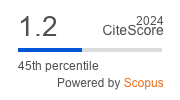Development of the Composition and Technology of a Combined Drug Based on Microspheres with Doxorubicin Hydrochloride and Comenic Acid
https://doi.org/10.33380/2305-2066-2022-11-2-118-125
Abstract
Introduction. In recent decades, the role of X-ray endovascular methods has been progressing in the treatment of oncology. It became possible to perform embolization not only to stop bleeding from a tumor, but also for the purpose of targeted delivery of chemotherapy drugs. However, of particular interest is the development of new combined drugs that combine cytostatic action, embolization of blood vessels that feed the tumor, and analgesia.
Aim. The aim of the study is to develop the composition and technology of a combined drug for parenteral administration, including lyophilized polymer microspheres saturated with doxorubicin hydrochloride and an injection solution of comenic acid.
Materials and methods. The study of the sorption of comenic acid by polymeric microspheres was carried out using the HPLC method. Analysis of the appearance of polymeric microspheres and obtaining their photographic images was carried out by microscopy using a microscope with a digital camera.
Results and discussion. The study made it possible to determine that comenic acid, unlike doxorubicin hydrochloride, is practically not sorbed by polymer microspheres, which justifies the expediency of including a solution of comenic acid in the composition of the finished dosage form in the form of a separate injection solution. It has been established that when obtaining lyophilized polymer microspheres saturated with doxorubicin hydrochloride, it is necessary to use water for injection as a solvent for doxorubicin hydrochloride lyophilisate. A combined medicinal product has been developed for use in the field of X-ray surgery, containing: a bottle with a lyophilizate of polymeric microspheres saturated with doxorubicin hydrochloride in a ratio of 1 : 2, intended for chemoembolization; an ampoule with a solution containing 20 mg/ml of comenic acid, intended for intravenous administration in order to relieve pain.
Conclusion. As a result of the study, the possibility of sorption of comenic acid by polymeric microspheres was studied. A technology has been developed for obtaining polymeric microspheres saturated with doxorubicin hydrochloride. A combined drug intended for use in the field of X-ray surgery has been developed.
About the Authors
T. A. BitkinaRussian Federation
14A, Prof. Popov str., Saint-Petersburg, 197376; 4А, Tikhoretsky av., Saint-Petersburg, 194064
A. V. Basevich
Russian Federation
14A, Prof. Popov str., Saint-Petersburg, 197376
References
1. Mikhail A. S., Negussie A. H., Mauda-Havakuk M., Owen J. W., Pritchard W. F., Lewis A. L., Wood B. J. Drug-eluting embolic microspheres: State-of-the-art and emerging clinical applications. Expert Opin Drug Deliv. 2021;18(3):383–398. DOI: 10.1080/17425247.2021.1835858.
2. Delicque J., Guiu B., Boulin M., Schwanz H., Piron L., Cassinotto C. Liver chemoembolization of hepatocellular carcinoma using TANDEM® microspheres. Future Oncol. 2018;14(26):2761–2772. DOI: 10.2217/fon-2018-0237.
3. Li J., Zhang B., Yue C., Wu J., Zhao L., Sun D., Wang R. Strategies to release doxorubicin from doxorubicin delivery vehicles. Journal of drug targeting. 2018;26(1):9–26. DOI: 10.1080/1061186X.2017.1363209.
4. Bitkina T. A., Basevich А. V., Rodin V. М. Critical points for the production of polymeric microspheres used in X-Ray surgery. Drug development & registration. 2020;9(3):28–35. (In Russ.) DOI: 10.33380/2305-2066-2020-9-3-28-35.
5. Nouri Y. M., Kim J. H., Yoon H. K., Ko H. K., Shin J. H., Gwon D. I. Update on Transarterial Chemoembolization with Drug-Eluting Microspheres for Hepatocellular Carcinoma. Korean Journal of Radiology. 2019;20(1):34–49. DOI: 10.3348/kjr.2018.0088.
6. Penniyaynen V. A., Plakhova V. B., Rogachevskii I. V., Terekhin S. G., Podzorova S. A., Krylov B. V. Molecular mechanisms and signaling by comenic acid in nociceptive neurons influence the pathophysiology of neuropathic pain. Pathophysiology. 2019;26(3–4):245–252. DOI: 10.1016/j.pathophys.2019.06.003.
7. Rogachevskii I. V., Plakhova V. B., Penniyaynen V. A., Terekhin S. G., Podzorova S. A., Krylov B. V. New approaches to the design of analgesic medicinal substances. Canadian journal of physiology and pharmacology. 2022;100(1):43–52. DOI: 10.1139/cjpp-2021-0286.
8. Dick O. E., Krylov B. V., Nozdrachev A. D. Possible mechanism of bursting suppression in nociceptive neurons. Doklady. Biochemistry and biophysics. 2017;473(1):137–140. DOI: 10.1134/S1607672917020120.
9. Bitkina T.A., Basevich A. V. Development and study of the stability of comenic acid solutions. Drug development & registration. 2021;10(4): 108–114. (In Russ.) DOI: 10.33380/2305-2066-2021-10-4(1)-108-114.
10. Lakkakula J. R., Gujarathi P., Pansare P., Tripathi S. A comprehensive review on alginate-based delivery systems for the delivery of chemotherapeutic agent: Doxorubicin. Carbohydrate polymers. 2021;259:117696. DOI: 10.1016/j.carbpol.2021.117696.
Supplementary files
|
|
1. Графический абстракт | |
| Subject | ||
| Type | Исследовательские инструменты | |
View
(1MB)
|
Indexing metadata ▾ | |
Review
For citations:
Bitkina T.A., Basevich A.V. Development of the Composition and Technology of a Combined Drug Based on Microspheres with Doxorubicin Hydrochloride and Comenic Acid. Drug development & registration. 2022;11(2):118-125. (In Russ.) https://doi.org/10.33380/2305-2066-2022-11-2-118-125










































